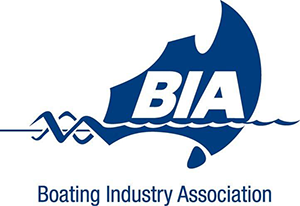BOATING TERMINOLOGY
There is specialised terminology and language associated with many professions. In boating this is more pronounced, it has its own language, evolved over centuries to suit the needs of seafarers.
Understanding this terminology is important as it underpins boating knowledge and seamanship skill.
| Term | Description |
| Abeam | At 90 degrees to the vessel's direction or fore and aft line. |
| Aft | Towards the back/stern of the boat. |
| Astern | In the back of the boat. |
| All-round light | A light showing an unbroken light over an arch of the horizon of 360 degrees. A masthead light located on power vessels is an all-round light. |
| Bar | A shallow area formed by sand, mud, gravel, or shingle, near the mouth of a river or at the approach to a harbour which is often dangerous. |
| Beam | The greatest width of the boat. |
| Bow | The front of the vessel. |
| Bowline | Knot used to form a loop in the end of a line. |
| Bitter end | The last part of the rope or chain which should be connected to the inside of the anchor locker. |
| Buoy | A floating container anchored to the sea bottom so that it remains in position. Buoys are used to mark channels, moorings , exclusion zones or racecourses. |
| Bombora | A shallow area where waves may break. |
| Chart Datum | The baseline of tidal height above which tidal levels and predictions are given in Tide Tables. |
| COLREGS | International rules for the prevention of collisions at sea. The rules of the road at sea. |
| Come to | Point up closer to the wind. |
| Draft | The minimum depth of water a vessel needs to float in. |
| Ebb tide | A falling or run-out tide. |
| Enclosed waters | Any port or navigable waterway. |
| EPIRB | Emergency Position Indicating Radio Beacon |
| Fairway | Any navigable channel. |
| Flood tide | The rising or run-out tide. |
| Freeboard | The distance from the waterline to the deck. |
| Give-way | Reduce speed, stop, go astern or alter course so as to keep out of another vessels path. |
| Go astern | Reverse engines or travel backwards |
| Gunwale | Pronounced "gunnel", the top each of the vessel's sides. |
| Heave to | Steering into the wind and sea making minimum headway |
| Knots (speed) | One knot is a speed of one nautical mile per hour or 1.852km/hr. |
| Lanyard | A small line used to join to anything. Example: bucket |
| Leads (transits) | Marks used in channels and at bar entrances which when in line indicate the centre of the navigable channel. |
| Lee shore | The shore onto which the wind blows. |
| Leeward | The downwind side. |
| Magnetic north | This is where all compass needles point. It is the area of greatest magnetic attraction in the earth. |
| On the quarter | Towards the stern, not abeam. |
| Open waters | Navigable waters which are not enclosed waters. Often referred to as "Ocean waters". |
| Planing | A boat is said to be planing when it is moving over the top of the water rather than through the water. |
| Port -side | The left-hand side of a vessel when you are looking forward from the stern and the side on which a red navigation side light is displayed. |
| PWC | Personal water craft is vessel designed to be operated by a person standing, siding astride or kneeling on. It uses waterjet propulsion and has an engine in a watertight compartment. |
| Quartering Sea | Sea coming on a boats quarter. |
| Scope | The ratio of length of anchor rode in use to the vertical distance from the bow of the vessel to the bottom of the water |
| Spring line | A pivot line used in docking, undocking preventing the boat from moving forward or astern while made fast to a dock/jetty. |
| Stand on | Continue on the same course and speed. |
| Starboard side | The right hand side of the vessel when you are looking forward from the stern and the side on which a green navigation side light is displayed. |
| Stern | The back or rear of the vessel. |
| Transom | The stern cross-section of a boat. |
| Trim | Fore and aft balance of a boat |
| Underway | Not at anchor or made fast to shore or ground. If you are drifting, you are underway. |
| Windward | The direction from which the wind blows. |

